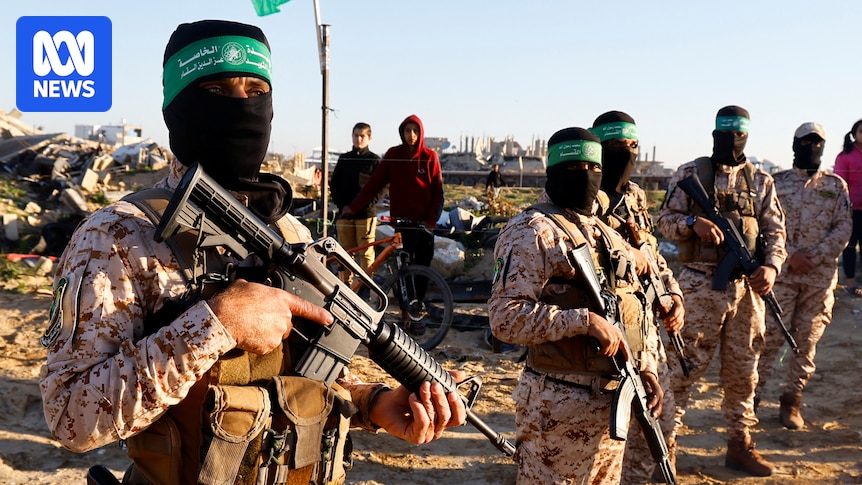
When the Palestinian militant group Hamas initiated its attacks on Israel on October 7, 2023, it declared the onset of a religious war, aiming for the “full liberation of Palestine from the sea to the river.” Dubbed “Al Aqsa Flood,” this operation marked a pivotal moment in the ongoing conflict. However, nearly two years of relentless fighting have significantly eroded Hamas’s leadership, military infrastructure, and governance capabilities in the Gaza Strip.
Despite these setbacks, Hamas has managed to retain a foothold in Gaza, holding onto Israeli hostages and maintaining some military capacity. The group continues to recruit from the Gaza population, which harbors strong grievances against Israel. This resilience highlights the complexity of the conflict and raises questions about the future of Hamas and the broader geopolitical landscape.
Hamas’ Decline and Adaptation
Since launching its operation, Hamas has seen its senior leaders targeted and its infrastructure decimated. Israeli strikes have turned former strongholds into wastelands, yet the group persists. According to Erik Skare, a researcher at Oslo University, “There’s nothing left of the political institutions that Hamas once ruled before the Gaza war.” Despite this, Skare notes that Hamas still exerts influence over Gaza’s civilian population and continues to engage in daily attacks against Israeli troops.
The recent Israeli attack in Doha, Qatar, targeting Hamas’s top leadership, underscores the group’s precarious position. While Hamas claims its leaders survived, the political and military leadership has been severely impacted by Israeli actions. The killing of key figures, such as Yahya Sinwar in Gaza, has left hardliner Izz al-Din al-Haddad as the surviving military commander, who warns of prolonged battles ahead.
Shifting Military Tactics
Hamas’s military strategy has shifted from a formal command structure to an insurgency model, utilizing autonomous military cells. Dr. Skare explains, “It has gone from the traditional chain of command to working with autonomous military cells that operate clandestinely.” This shift has resulted in a decrease in operations, from an average of 40 per week in October 2023 to 10-15 currently.
“One thing it could be that Hamas is, in fact, militarily weakened. It could be also that Hamas is adapting to the urban guerilla warfare.” – Dr. Erik Skare
The number of fighters remaining in Hamas is uncertain. However, recent reports indicate that the Israel Defense Forces have killed approximately 8,900 members of Hamas and the Palestinian Islamic Jihad, out of an estimated 47,653 active members.
Historical Resilience and Future Influence
Historically, Hamas has demonstrated resilience in the face of Israeli assassination campaigns, recovering from the loss of leaders like Sheikh Ahmed Yassin. Mkhaimar Abusada, a former associate professor at Gaza’s Al-Azhar University, notes that Hamas has previously succeeded in replacing its leadership. “It happened to Hamas in 2003, 2004, after Israel killed five of their top senior leaders … Hamas succeeded in replacing them,” he stated.
Some observers suggest that the group’s West Bank leadership, largely untargeted by Israel, could emerge with greater influence. Amos Harel, a veteran Israeli military correspondent, highlights the collective decision-making within Hamas, which includes input from West Bank leaders and imprisoned members.
The Impact of Assassination Strategies
Israel’s strategy of targeting Hamas leaders has sparked debate about its effectiveness. Former Israeli security chiefs argue that assassinations complicate diplomatic resolutions. Hannah Alshaikh from the Arab Centre DC points out that Israel’s actions have historically undermined peace negotiations, citing the 2012 and 2014 conflicts as examples.
“In 2012, Israel launched another war on Gaza after assassinating Ahmad al-Jabari, who had led negotiations the previous year.” – Hannah Alshaikh
Despite these challenges, some Israeli commentators believe that targeting external Hamas leadership could simplify negotiations by consolidating decision-making within Gaza. Amos Nadan of Tel Aviv University suggests that this approach might lead to more direct negotiations with those holding hostages in Gaza.
Long-Term Implications
As the conflict continues, the idea of completely eradicating Hamas from Palestinian politics remains contentious. Dr. Skare argues that envisioning a future without Hamas is unrealistic, given its entrenched role in Palestinian society. “Although discontent with Hamas is growing in the Gaza Strip, and although its support is declining, we do not see an equivalent increase in support for any of the alternative factions,” he explains.
The path forward remains uncertain, with many analysts emphasizing the need for a negotiated solution to ensure lasting peace. Former US negotiator Brett McGurk warns that military actions alone cannot secure the release of hostages or achieve a sustainable resolution.
“The only way to return the remaining hostages safely is through a negotiated deal. There is no other way to do it.” – Brett McGurk
As the situation evolves, the international community continues to watch closely, recognizing that the future of Hamas and the broader conflict will have significant implications for regional stability and peace efforts.






